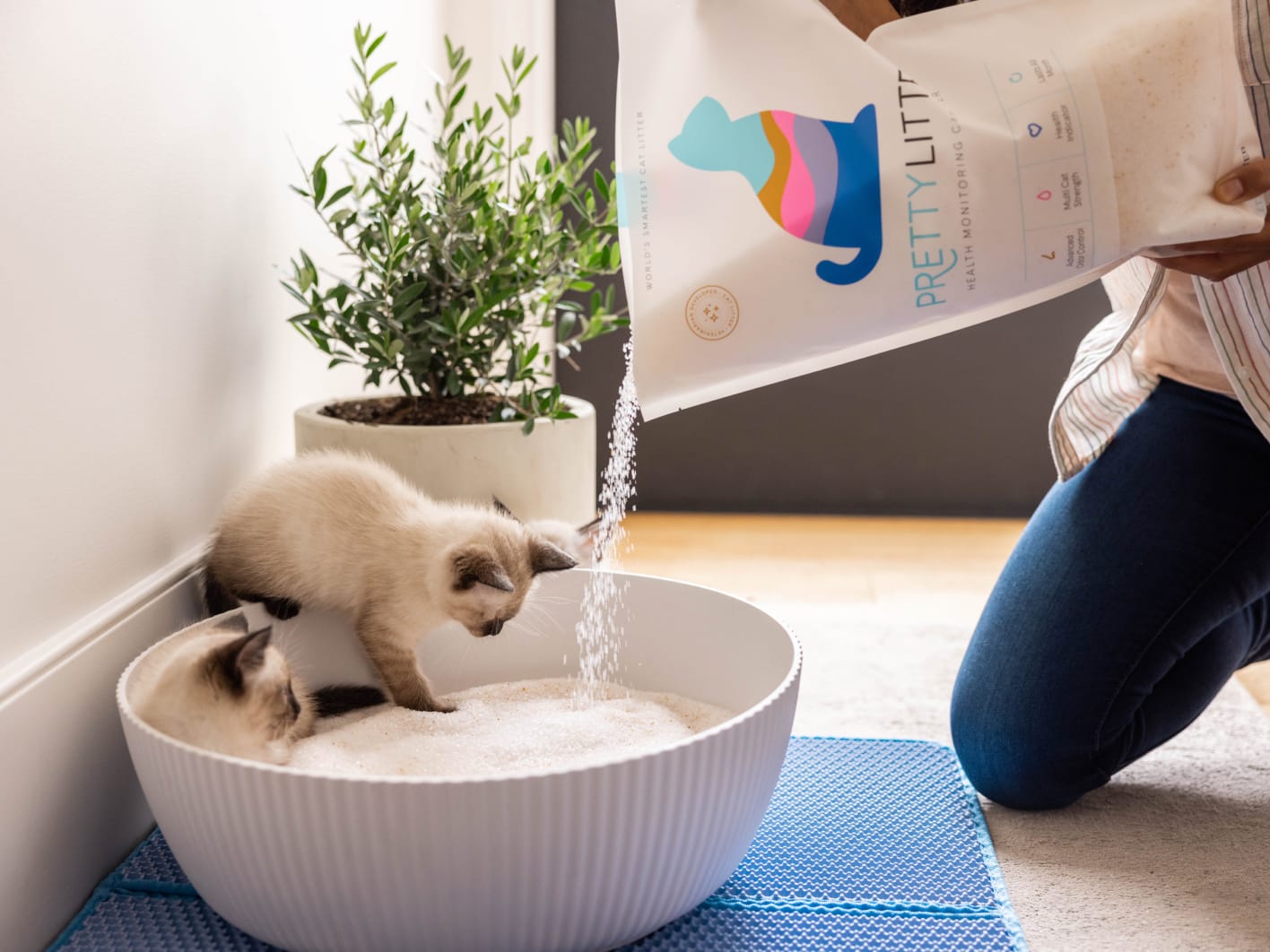
Blood
Acidity
Typical
Alkalinity
What Can Dark Yellow and Olive Green Indicate?
When dark yellow and olive green appear in your cat’s PrettyLitter, this means their urine is in the typical pH range.
Yellow/Olive
Green = Typical

When you see yellow in your PrettyLitter, you can breathe a sigh of relief—it’s an indication that your cat’s urine is within the typical pH range. Yellow and green cat litter means your cat’s urinary health is looking good, but it’s always important to keep an eye out for any changes.
PrettyLitter’s color-changing technology is designed to give you peace of mind by providing daily insights into your cat’s well-being. If you see the color change to blue or orange, you should monitor your cat’s litter for the following 48 hours. If blue and orange continue to appear, you should consult your cat’s veterinarian.If red appears in your cat’s litter box, this means that there is blood in the urine and you should immediately consult a veterinarian.
PrettyLitter’s color-changing technology is designed to give you peace of mind by providing daily insights into your cat’s well-being. If you see the color change to blue or orange, you should monitor your cat’s litter for the following 48 hours. If blue and orange continue to appear, you should consult your cat’s veterinarian.If red appears in your cat’s litter box, this means that there is blood in the urine and you should immediately consult a veterinarian.
What Is Typical?

The normal pH range of cat urine falls between 6 and 7. When your cat's urine is within this range, it indicates a healthy balance in their urinary system. PrettyLitter’s color-changing technology turns liquids with this neutral pH level to a dark yellow or olive green color.
What Other Cat
Parents Are Saying
Let’s Get Started

Knowing more about your cat’s health is just a few clicks away! Order our color-changing cat litter today for more peace of mind around your cat’s well-being.
TRY PRETTYLITTER TodayHealth
Monitoring
Advanced
Odor Control
Hassle-Free
Delivery
Frequently Asked Questions

Daily. To keep your cat comfortable and to get the most out of your litter, you should scoop out the solids and stir the litter daily. As you’re doing their litter box maintenance, take a peek at the color that appears in the litter.
If you see the color change to blue or orange, you should monitor your cat’s litter for the following 48 hours. If blue and orange continue to appear, you should consult your cat’s veterinarian. If red appears in your cat’s litter box, this means that there is blood in the urine and you should immediately consult a veterinarian.
Talk to your veterinarian about how often your cat should visit their office. Visit frequency varies by age and individual conditions. From kittenhood to senior age cats, your veterinarian will have recommendations that may vary between life stages.
It can. Feline urine pH fluctuates over time depending on meal timing, water consumption, and stress, so temporary spikes are not a reason for alarm unless the color shows over several urination cycles.
Free Shipping*In the Contiguous US
30-Day Risk Free Guarantee
Cancel Anytime